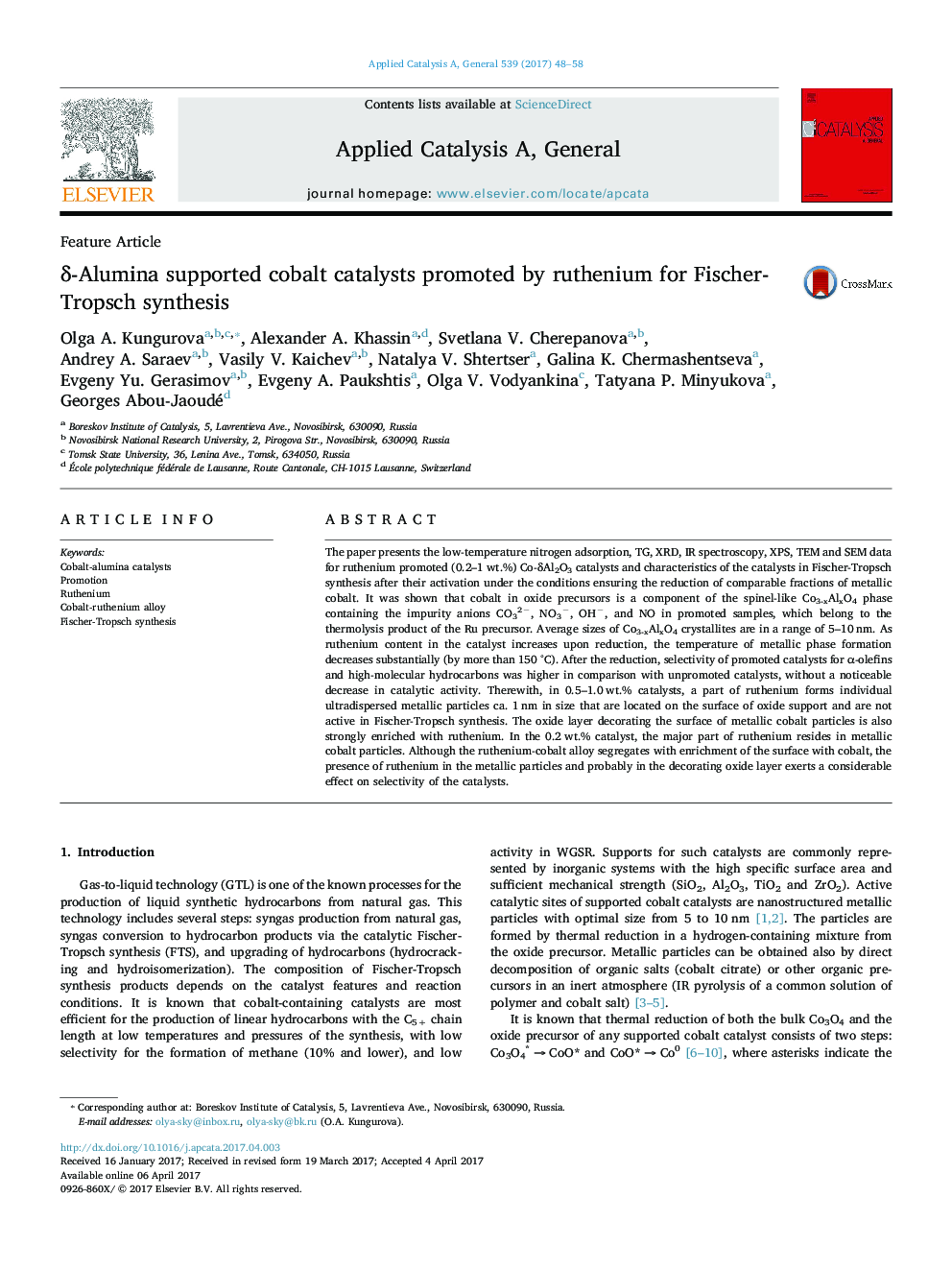| کد مقاله | کد نشریه | سال انتشار | مقاله انگلیسی | نسخه تمام متن |
|---|---|---|---|---|
| 6453280 | 1418507 | 2017 | 11 صفحه PDF | دانلود رایگان |

- Reduction of cobalt cations by hydrogen occurs at significantly lower temperatures for the ruthenium-promoted Сo-δAl2O3 catalysts.
- FTS was carried out after activation catalyst under the conditions ensuring the comparable extent of cobalt reduction.
- Selectivity of Ru-promoted Сo-δAl2O3 catalysts for olefins and high-molecular hydrocarbons is higher in comparison with unpromoted catalysts.
- At 0.2 wt.% Ru loading, the major part of ruthenium resides in metallic cobalt particles.
- When 0.5-1.0 wt.% of Ru is introduced to catalyst, a part of Ru forms individual ultradisperse particles, which are not active in FTS.
The paper presents the low-temperature nitrogen adsorption, TG, XRD, IR spectroscopy, XPS, TEM and SEM data for ruthenium promoted (0.2-1 wt.%) Сo-δAl2O3 catalysts and characteristics of the catalysts in Fischer-Tropsch synthesis after their activation under the conditions ensuring the reduction of comparable fractions of metallic cobalt. It was shown that cobalt in oxide precursors is a component of the spinel-like Со3-xAlxO4 phase containing the impurity anions СÐ32â, NO3â, ÐÐâ, and NO in promoted samples, which belong to the thermolysis product of the Ru precursor. Average sizes of Со3-xAlxO4 crystallites are in a range of 5-10 nm. As ruthenium content in the catalyst increases upon reduction, the temperature of metallic phase formation decreases substantially (by more than 150 °C). After the reduction, selectivity of promoted catalysts for α-olefins and high-molecular hydrocarbons was higher in comparison with unpromoted catalysts, without a noticeable decrease in catalytic activity. Therewith, in 0.5-1.0 wt.% catalysts, a part of ruthenium forms individual ultradispersed metallic particles ca. 1 nm in size that are located on the surface of oxide support and are not active in Fischer-Tropsch synthesis. The oxide layer decorating the surface of metallic cobalt particles is also strongly enriched with ruthenium. In the 0.2 wt.% catalyst, the major part of ruthenium resides in metallic cobalt particles. Although the ruthenium-cobalt alloy segregates with enrichment of the surface with cobalt, the presence of ruthenium in the metallic particles and probably in the decorating oxide layer exerts a considerable effect on selectivity of the catalysts.
173
Journal: Applied Catalysis A: General - Volume 539, 5 June 2017, Pages 48-58